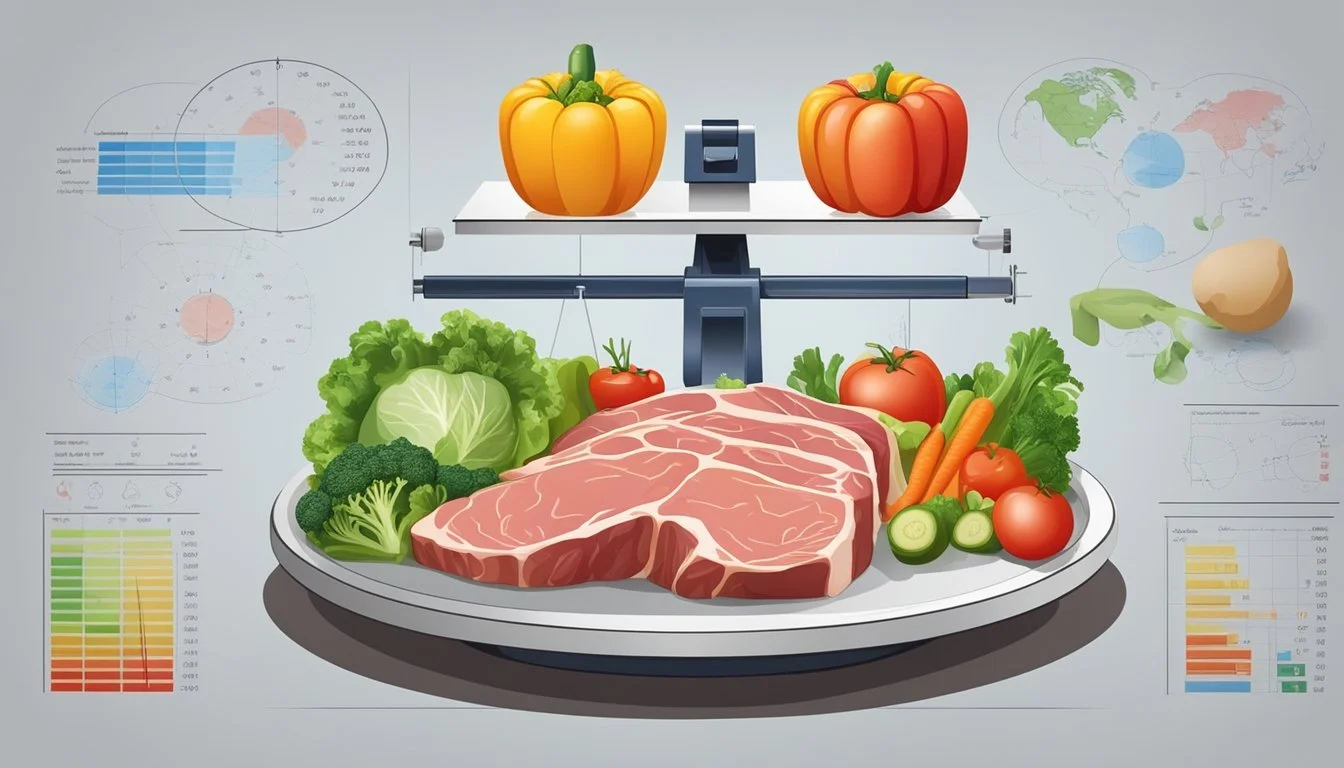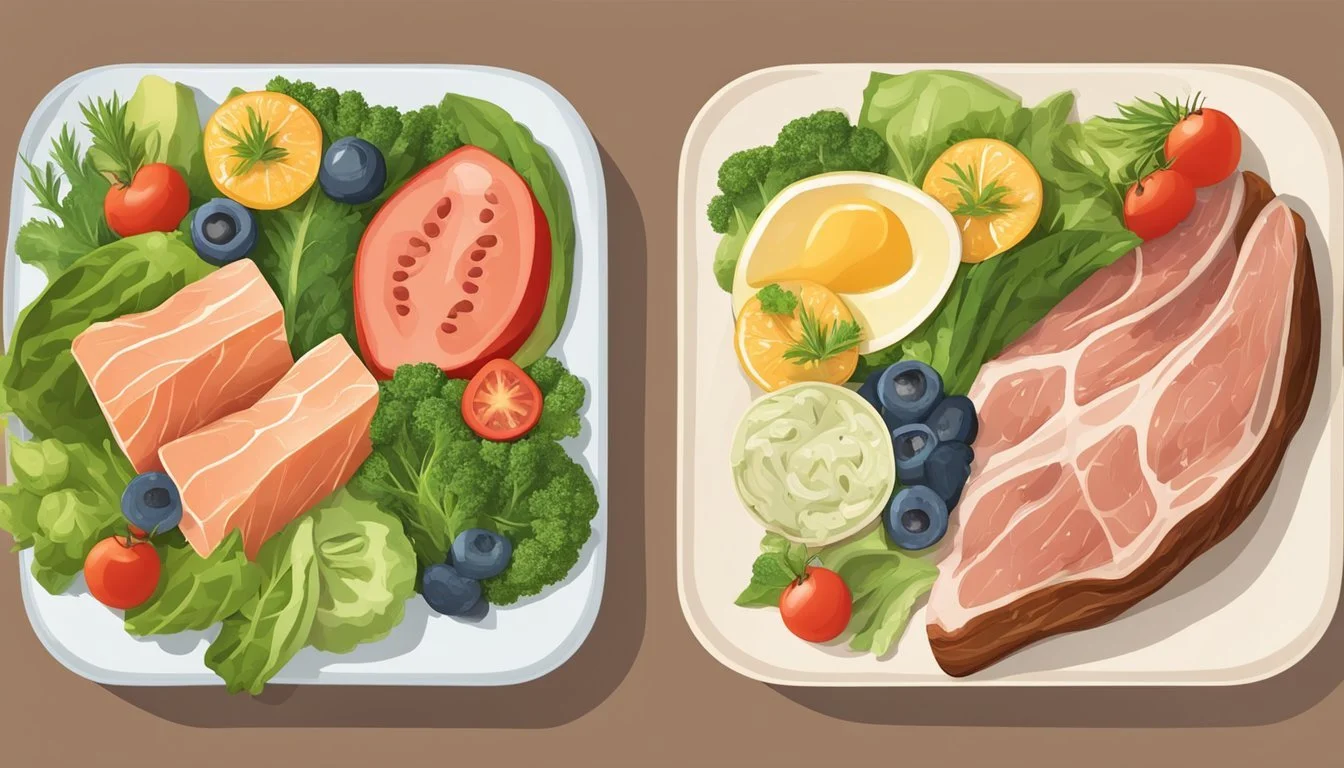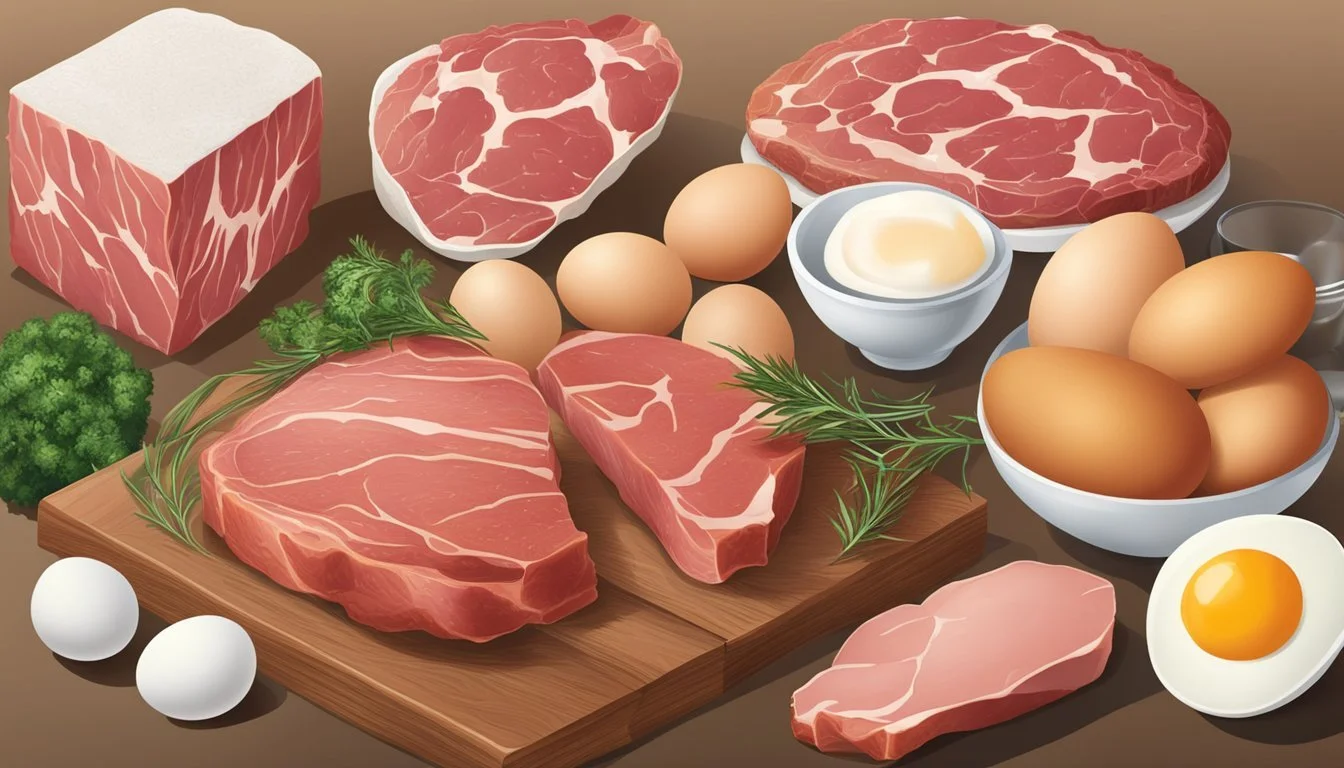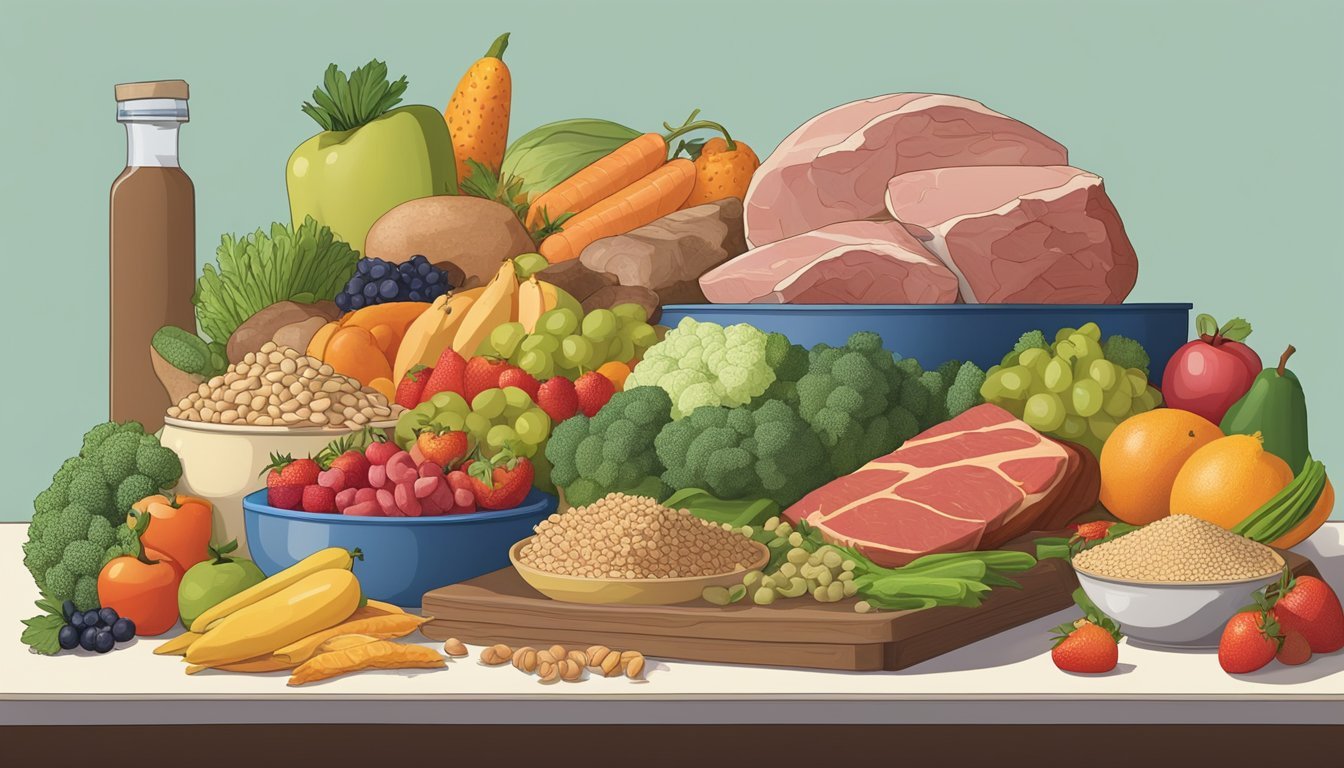Carnivore Diet vs. The Abs Diet
Unpacking the Truth Behind Six-Pack Promises
In the pursuit of optimal fitness and health, diets often take center stage, with many individuals seeking the best nutritional pathway to achieve their desired results. The carnivore diet and the Abs Diet are two contrasting approaches that have generated substantial debate among fitness enthusiasts and nutritionists. The carnivore diet, as the name suggests, consists almost entirely of animal products, with proponents consuming meats, eggs, and sometimes dairy, while excluding plant-based foods. This approach is premised on the belief that human physiology is best suited to a high-protein, high-fat regimen with minimal carbohydrates.
The Abs Diet, on the other hand, is designed with a focus on developing and maintaining a muscular abdomen, relying on a balanced intake of proteins, fats, and carbohydrates, with an emphasis on whole, unprocessed foods. This diet underscores the importance of nutrition in reducing body fat to reveal abdominal muscles. Adherents to the Abs Diet often consume frequent, smaller meals throughout the day, aiming to stoke metabolism and reduce fat stores.
While the carnivore diet suggests that eliminating plant-based foods can lead to improved health outcomes and simplified meal planning, the Abs Diet maintains the position that a varied and balanced diet, inclusive of carbohydrates and fiber from fruits and vegetables, is essential for overall health and especially for achieving a lean, muscular physique. Both diets highlight the significance of food choices in reaching body composition goals, yet they diverge sharply on the ideal sources and types of nutrition, sparking a conversation about the best route to physical wellness and strength.
Overview of the Carnivore Diet
The Carnivore Diet is a regimen centered on consuming animal-based foods exclusively, with a strong emphasis on high-protein and low-carbohydrate intake, purportedly supporting lean muscle maintenance.
Principles of the Carnivore Diet
The Carnivore Diet is characterized by a strict consumption of meat, fish, eggs, and select dairy products. Vegetables, fruits, grains, nuts, and seeds are eliminated, positioning the diet in stark contrast to traditional dietary recommendations. The proponents emphasize protein as the cornerstone nutrient, which is considered essential for building and repairing muscles.
Primary Foods: Meat, fish, eggs, some dairy
Excluded Foods: Vegetables, fruits, grains, legumes, nuts, seeds
Macronutrient Ratio: High protein, almost zero carbohydrates, variable fat
Benefits and Criticisms
May support lean muscle due to high protein content.
Simplicity and ease of following with no need to track calories or meal timing.
Criticisms:
Lacks dietary fiber and essential nutrients present in fruits and vegetables.
Risks associated with a high intake of saturated fat and cholesterol.
Long-term health impacts are not well-studied.
It is important to consider that while some individuals may report positive short-term outcomes, the Carnivore Diet is a significant departure from conventional dietary guidelines which proffer a balanced intake of food groups, including ample vegetables and fruits for overall health.
Understanding the Abs Diet
The Abs Diet is a plan focused on transforming body composition through nutrition and exercise strategies aimed at developing a lean physique and prominent abdominal muscles, commonly referred to as a six-pack.
Core Concepts of the Abs Diet
The Abs Diet emphasizes the importance of frequent, balanced meals to stimulate metabolism and aid in fat loss. The diet typically includes six meals per day: three main meals and three snacks. This approach is designed to maintain satiety while ensuring a steady intake of nutrients throughout the day. Key components of the diet include:
Lean proteins such as chicken, turkey, and fish
Whole grains and high-fiber foods for digestive health and sustained energy
A focus on portion control to manage caloric intake without strict calorie counting
Inclusion of foods believed to aid in fat burning, like certain nuts and low-fat dairy products
Minimization of trans fats, often found in processed foods, and a reduction of alcohol consumption
Pros and Cons of the Abs Diet
Pros:
Encourages consumption of a variety of nutrient-dense foods
Designed to reduce hunger by promoting regular meals
Supports a lifestyle aimed at achieving and maintaining six-pack abs through nutrient-dense foods
Cons:
May require significant dietary changes and meal preparation
The frequent meal schedule could be difficult for individuals with busy lifestyles
The emphasis on developing six-pack abs might not address broader nutritional needs or be suitable for all fitness goals
Nutritional Science and Body Composition
Optimizing body composition requires a meticulous balance of macronutrients and micronutrients that fuel muscle growth and fat loss. This section explores how different diets—specifically the Carnivore Diet and the Abs Diet—affect these nutritional components and, by extension, impact body composition.
Importance of Macronutrients
Protein is critical for muscle repair and growth. Diets high in protein, such as the Carnivore Diet, could theoretically support muscle synthesis given its emphasis on meat consumption. Conversely, the Abs Diet includes not only protein-rich foods but also a significant amount of carbohydrates for energy and fats for hormonal function, utilizing a more balanced macronutrient distribution.
Protein: Essential for muscle building.
Carbs: Provide energy to fuel workouts and day-to-day activities.
Fats: Maintain hormone levels and overall health.
Role of Micronutrients
Micronutrients, including vitamins and minerals, support overall health and body function but are often overlooked in stringent diets. While the Carnivore Diet may provide certain micronutrients from animal sources, it lacks others commonly found in plants. The Abs Diet is structured to include a variety of foods, potentially offering a more complete micronutrient profile, essential for functions including immune response and metabolic processes.
Vitamins: Necessary for energy production and immune defense.
Minerals: Help with bone health and fluid balance.
Body Fat and Muscle Gain
Reducing body fat while increasing muscle mass is a common goal for individuals on either diet. The Carnivore Diet's high-protein, low-carb approach might assist in fat loss through ketosis, while its absence of carbs might limit muscle glycogen stores, potentially impacting high-intensity physical performance. In contrast, the Abs Diet promotes lean muscle gain and fat loss through a variety of protein sources, complex carbs, and regular exercise.
Body Fat: Targeted by a calorie deficit and macronutrient balance.
Muscle Gain: Achieved with sufficient protein and resistance training.
Exercise Regimens Compared
In evaluating the Carnivore Diet and the Abs Diet, it is essential to understand how each diet integrates with specific exercise regimens. These diets have distinct approaches on the roles and types of exercise, which are imperative for achieving their respective goals.
Carnivore Diet and Exercise Compatibility
The Carnivore Diet emphasizes a high intake of animal products with little to no carbohydrates, which may affect the energy levels available for exercise. People on this diet often focus on strength training or weight training to augment muscle mass and capitalize on the high-protein intake. Resistance training is compatible with this diet as it helps in building and maintaining muscle, which the diet supports with its protein-rich approach.
Exercise in the Abs Diet Strategy
In contrast, the Abs Diet includes a balance of macronutrients that supports a variety of exercises aimed at reducing body fat and enhancing muscle definition. This diet is often paired with a comprehensive workout plan that includes cardio to burn calories and resistance exercises to strengthen core muscles, both fundamental for revealing six-pack abs. Cardio routines may range from moderate to high intensity and typically include activities such as running, cycling, or swimming.
Resistance vs. Cardio Training
Individuals on either diet need to consider the balance between resistance and cardio training based on their goals. Resistance training primarily involves exercises using weights or resistance bands to improve muscle strength and size. Cardio training, on the other hand, focuses on elevating the heart rate through activities like jogging or HIIT (high-intensity interval training), aiming to increase cardiovascular health and burn fat.
Carnivore Diet:
Emphasis: Resistance and strength training
Common Exercises: Weightlifting, bodyweight workouts, kettlebell routines
Abs Diet:
Emphasis: Combination of cardio and resistance exercises
Common Exercises: Circuit training, core-focused movements, endurance cardio workouts
Both diets can effectively support their exercise regimens when aligned with the goals of increasing muscle mass or enhancing muscle definition. However, the choice of diet should align with an individual's workout preferences, energy needs, and overall health goals.
Diet Results and Physiological Changes
In exploring the Carnivore Diet and The Abs Diet, individuals often report distinct changes in body composition, primarily regarding fat loss and muscle definition. The effectiveness of each diet varies, and the acquisition of six-pack abs is contingent on a range of physiological factors.
Fat Loss and Muscle Definition
The Carnivore Diet is a high-protein, animal-based eating plan that predominantly includes meats, eggs, and sometimes dairy. Shifting to a carnivore regimen may contribute to fat loss as it often results in a calorie deficit due to its high satiety factor. Meanwhile, given the diet's high protein content, it also may support increases in lean muscle mass. However, without a structured calorie deficit and exercise, significant fat loss, particularly at the body fat level necessary to reveal a six-pack, may not be achieved.
The Abs Diet focuses on whole foods and regular exercise. It emphasizes protein sources, fiber-rich vegetables, and whole grains, aiming to develop muscle definition while shedding fat. The diet employs frequent meals to stave off hunger and maintain a consistent metabolism. Lean muscle gain and fat loss from this diet typically result from a combination of nutritional balance and abdominal exercises aimed at body composition improvement.
Six-Pack Science: Fact vs. Myth
While a six-pack is often seen as a benchmark for fitness success, its appearance is chiefly tied to a reduction in body fat levels, which allows the abdominal muscles to become visible. Achieving this state involves more than diet alone; it requires a comprehensive lifestyle approach that includes targeted exercise, adequate rest, and stress management.
The Carnivore Diet, while potentially facilitating fat loss due to low-carb intake which often leads to a form of ketosis, does not inherently guarantee the formation of six-pack abs. External factors such as genetics and overall activity levels play significant roles.
Conversely, The Abs Diet integrates workout routines designed to specifically enhance muscle definition in the abdominal region. It acknowledges the myth that diet alone can carve out a six-pack and instead, promotes a holistic approach that combines diet, strength training, and cardio to achieve optimal body composition changes.
Dietary Sustainability and Lifestyle
The choice between the Carnivore Diet and the Abs Diet encompasses considerations of long-term health implications, necessary lifestyle and dietary changes, and the likelihood of maintaining each diet over time. Each plan proposes a distinct path to nutrition and weight loss, affecting sustainability differently.
Long-Term Health Implications
Carnivore Diet: It consists solely of animal products, omitting plant-based nutrients. Proponents argue that it aligns with human evolutionary eating, yet many health professionals raise concerns about the absence of fiber and variety of vitamins found in plants, which are essential for long-term health.
Abs Diet: It prioritizes protein-rich foods along with whole grains, fruits, and vegetables, aiming for balanced nutrition to support weight loss and muscle definition. The inclusion of diverse food groups suggests a more sustainable approach to meeting nutritional needs over the long-term.
Lifestyle and Dietary Changes
Carnivore Diet: Requires a significant shift from standard dietary patterns, excluding all plant-based foods. This may create social and practical challenges when dining out or cooking for a household with varied dietary preferences.
Abs Diet: Focuses on wholesome foods with an emphasis on six small meals per day to enhance metabolism. This approach could demand more frequent meal planning and preparation but may more easily integrate into diverse lifestyles.
Adherence to the Diet Plans
Carnivore Diet: Its restrictive nature may hinder long-term adherence for those who enjoy a varied diet or are concerned with the potential health risks of an all-meat meal plan.
Abs Diet: Encourages a less restrictive and potentially more palatable variety of foods, which may lead to higher adherence rates and sustainable weight loss and lifestyle practices.
Each diet presents unique lifestyle implications and sustainability challenges that individuals must carefully evaluate against their personal health goals and preferences.
Comparative Analysis
This section scrutinizes the functionality, cost-effectiveness, and adaptability of the Carnivore and Abs Diets in achieving dietary goals.
Carnivore vs. Abs Diet in Everyday Life
Carnivore Diet:
Focuses on animal products like meats, fish, and eggs.
Excludes carbohydrates, promoting fat and protein intake.
May simplify meal planning with a straightforward food list but could lead to monotony.
Abs Diet:
Emphasizes protein-rich foods, whole grains, and specific meal timing to target abdominal fat.
Encourages six small meals a day, with each meal containing at least two of the Abs Diet Power 12 Foods.
Includes a variety of foods, which can necessitate a more involved meal planning and preparation process.
Lifestyle Impact:
Carnivore Diet adherents might spend less time in the kitchen due to the diet's simplicity but may miss out on the diverse culinary experience.
Abs Diet followers must balance frequent meal preparation with workout routines to sculpt the midsection.
Cost-Benefit Analysis of Each Diet
Carnivore Diet:
Higher grocery bill due to the focus on meats, which are typically more expensive.
Potential health benefits and drawbacks must be weighed, as long-term impacts are not well-documented.
Abs Diet:
Offers a varied meal plan with potential cost savings from incorporating plant-based and whole grain foods.
Aligns with nutritional recommendations for a balanced diet, potentially offering a more sustainable choice.
Nutritional Value:
Both diets suggest high-protein intake, essential for muscle maintenance and growth.
Abs Diet includes varied nutrients from different food groups, while the Carnivore Diet may require supplementation of vitamins traditionally sourced from plants.
Personalization of Diet Plans
Carnivore Diet:
Allows for adjustments in meat selection based on personal preference and reaction.
Not easily adjustable for vegetarians or those preferring a more plant-centric diet.
Abs Diet:
Is flexible with food choices within the Power 12 Foods, accommodating varied palates and dietary restrictions.
Encourages integration of workouts focused on enhancing the midsection, which may be tailored to individual fitness levels.
Adaptability:
Personalization is key in both diets for long-term adherence and satisfaction.
Each individual’s health objectives and lifestyle will significantly dictate the success and practicality of the diet chosen.
Conclusion
The Carnivore Diet and the Abs Diet cater to distinct schools of thought within nutritional strategies. While the Carnivore Diet places emphasis on animal products as the sole source of nutrition, the Abs Diet incorporates a diverse range of foods aimed at reducing body fat and enhancing muscle definition, particularly in the abdominal region.
Carnivore Diet:
Promotes a high intake of protein and fat.
May facilitate body fat reduction, indirectly aiding in the visibility of six-pack abs.
Abs Diet:
Focuses on a balanced macronutrient distribution, crucial for overall nutrition.
Encourages exercise, vital for stimulating muscle growth and definition.
They share an underlying truth: dedication and consistency are key components for achieving fitness goals. Nutrition certainly plays a vital role, but one must not dismiss the importance of exercise in sculpting and maintaining six-pack abs. It's also critical to acknowledge that individual responses to diet and exercise can vary, suggesting that personalization is essential.
It is impartial to conclude that neither diet holds exclusivity over producing six-pack abs. Instead, they offer different pathways that may lead individuals to their desired physical outcomes, provided that these diets are accompanied by a consistent exercise regimen. It is paramount for individuals to consider their personal health goals, dietary preferences, and how their bodies react to different foods when choosing the right diet for themselves.










